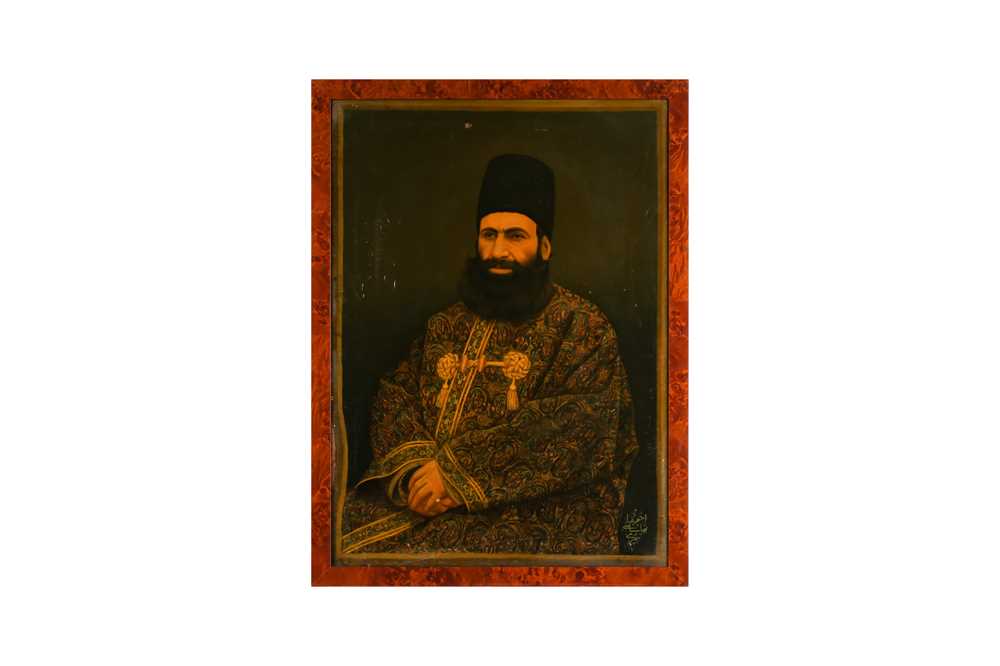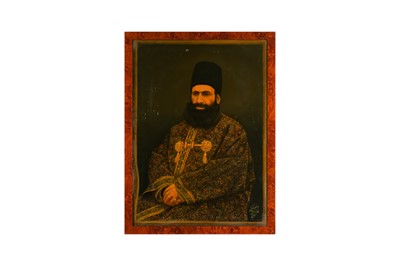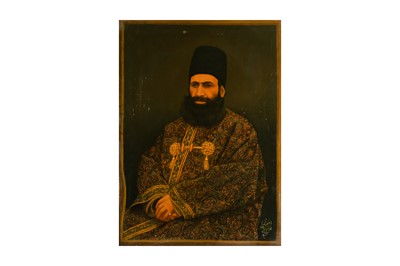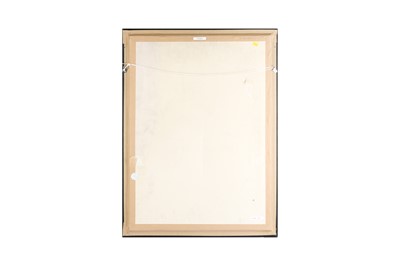28th Apr, 2023 11:00
Islamic Art - Property of a European Collector Part V
A PORTRAIT OF AN OFFICIAL QAJAR DIGNITARY
Late Qajar Iran, ca. 1890 - 1910, signed Samirumi
A PORTRAIT OF AN OFFICIAL QAJAR DIGNITARY
Late Qajar Iran, ca. 1890 - 1910, signed Samirumi
Oil on canvas, the vertical-format painting portraying a seated Qajar dignitary, wearing a typical termeh coat with boteh (paisley leaf) design and a tall cylindrical black Astrakhan fur kajkolah hat, the pictorial style influenced by Western standards and reminiscent of Sani al-Molk's official portraits of Qajar rules and dignitaries, signed in white in the lower right corner the Lowest of Worshippers, the painter Samirumi in Persian, mounted and framed, 75cm x 56cm including the frame.
Provenance: Sotheby's London, 14 October 1999, lot 66.
The surname Samirumi is usually employed as a nisba for artists coming from Samirum (a village in Isfahan Province). According to B. W. Robinson, at the beginning of 1900, in Qajar Iran, there were three painters bearing this takhallos (nom de plume). The two most renowned are Muhammad Ibrahim Samirumi and Muhammad Baqir Samirumi.
Ibrahim Samirumi was active as a lacquer master and portrait painter and was taught the European methods of painting in Russia. One of his outstanding lacquer works, presenting Persian ladies clad in European dresses and Western landscape views, is in the Bern Historical Museum's collection and dates to 1320 AH (1902 AD) (B. W. Robinson, Persian Lacquer in the Bern Historical Museum, IRAN: BIPS Journal, 1970, p. 50).
Baqir Samirumi, instead, was mostly active as a realist oil portrait painter (please see the portrait of Abdu'l-Baha', leader of the Bahai faith, offered at Rosebery's Auctioneers, 22 October 2018, lot 282), and was appointed the official title of naqqash-bashi ('head painter') at the court of Mas'ud Mirza Zill al-Sultan, the eldest son of Nasir al-Din Shah and governor of Isfahan (1850 - 1918). He is praised for having successfully translated the art of oil painting into the media of lacquer, as evident in a series of pen cases part of the Khalili Collection of Islamic Art (N. D. Khalili, B. W. Robinson, and T. Stanley, Lacquer of the Islamic Lands: Part 2, 1997, pp. 246 - 249, especially figs. 483 - 489).
Sold for £8,125
Includes Buyer's Premium
Do you have an item similar to the item above? If so please click the link below to submit a free online valuation request through our website.



